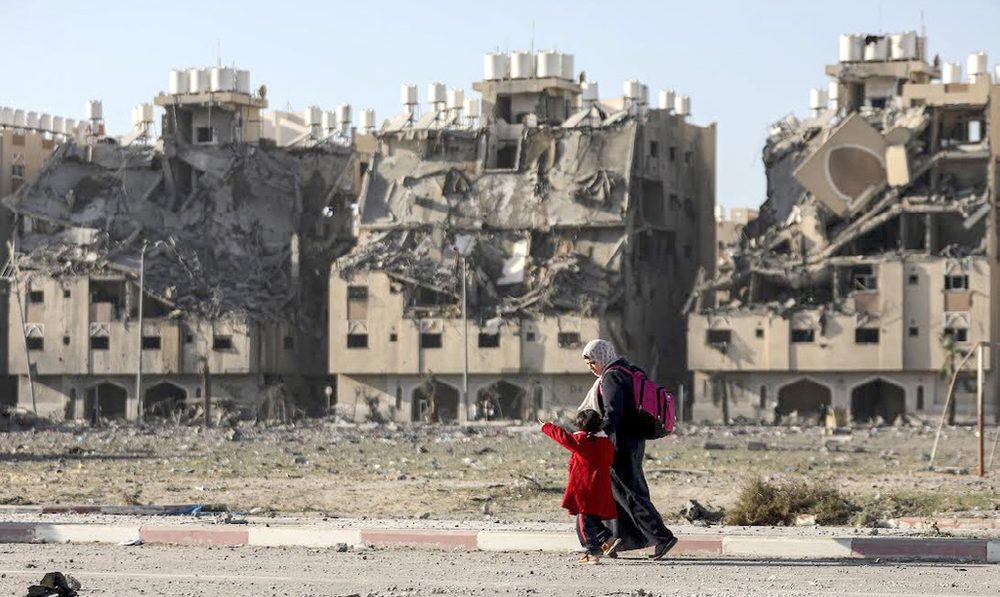
By Ephrat Livni, Rawan Sheikh Ahmad, and Abu Bakr Bashir
In the early hours of Tuesday, Israeli airstrikes hit a humanitarian region in the southern Gaza Strip, creating deep craters where Palestinians had gathered for safety, and according to local officials, causing the death or injury of dozens.
The Israeli defense forces claimed that the airstrikes were aimed at three high-ranking Hamas operatives involved in the October 7 assault that Hamas led against Israel.
The Health Ministry in Gaza reported at least 19 fatalities and over 60 injuries—numbers expected to increase as there are believed to be more victims trapped under debris and sand, with ambulances unable to reach the locations. Gaza health authorities do not differentiate between civilians and fighters when reporting casualties.
Muhammad al-Mughaier, a Civil Defense official in Gaza, stated that 40 bodies had been retrieved from the strike site. The reasons for the differing casualty numbers were not immediately apparent, though reports often fluctuate in the immediate aftermath of an attack.
The Israeli military indicated that the Civil Defense figures “do not correspond with the information” it possesses, but did not provide its own casualty assessment or comment on the Health Ministry’s figures. They claimed to have conducted a “precise strike” and asserted efforts to reduce civilian risk, while avoiding inquiries from The New York Times about specific measures taken.
Verified footage from the aftermath shows large craters in Muwasi’s southwestern region, where earlier satellite images indicated several tents had been present. Pictures taken on Tuesday morning depict individuals sifting through rubble using their phone lights and emergency workers from the Palestine Red Crescent Society digging with shovels.
Palestinians who were sheltering in Muwasi reported that the strike arrived suddenly around midnight or 1 a.m., with powerful explosions shaking their tents and saturating the air with smoke.
“It felt like an earthquake,” recounted Marwan Shaath, a 57-year-old civil servant from Rafah who has been seeking refuge in Muwasi with his family for over three months. “The whole area, and the tent itself, kept shaking.”
Fatoom al-Garra, a 30-year-old widow from Rafah, described fleeing with her children amid sounds of “terror” and the stench of burning. “We couldn’t see anything due to the black smoke and dust enveloping the area,” she noted.
Once a sparsely populated region, Muwasi is now filled with tens of thousands of Palestinians seeking refuge. While the Israeli military has categorized the area as a humanitarian zone, it asserts it will target militants wherever they believe them to be situated. Israeli airstrikes previously struck the region in July, purportedly targeting Hamas leaders, during which Gaza health officials reported numerous fatalities.
In its Tuesday statement, the Israeli military mentioned that aerial surveillance conducted prior to the strike confirmed the presence of militants in the targeted area.
Israel has long contended that Hamas operates among civilians to use them as human shields. International law specialists assert that Israel retains a duty to safeguard civilians during military actions. According to Gaza’s Health Ministry, more than 40,000 individuals have perished in the 11 months of conflict, with their statistics not differentiating between civilians and military personnel.
Tor Wennesland, the U.N. special coordinator for the Middle East peace efforts, condemned the strike, stating, “The killing of civilians must come to an end, and this dreadful war must conclude.”
The United Nations and various rights organizations have stated that there are no safe havens in Gaza. The entire population of Gaza—over 2 million Palestinians—has faced multiple displacements. Israel has issued frequent evacuations and reduced the scope of the humanitarian zone, forcing more Palestinians into increasingly confined spaces.
Al-Garra expressed skepticism towards Israel’s calls for individuals to seek refuge in Muwasi.
“What safety are they referring to?” she asked. “There is no safety.”
